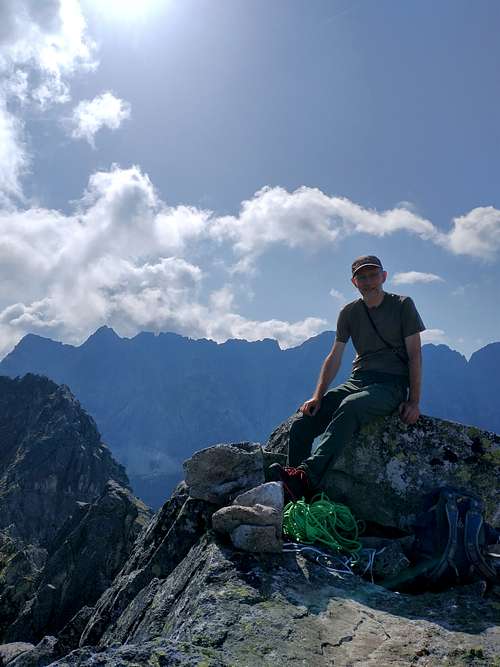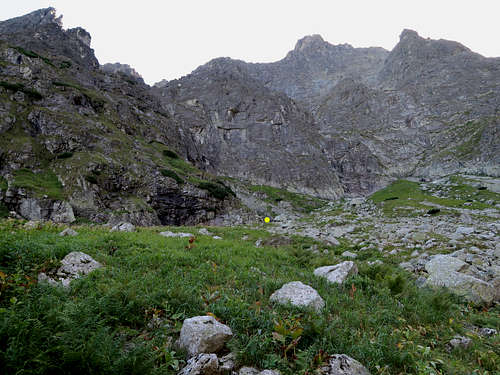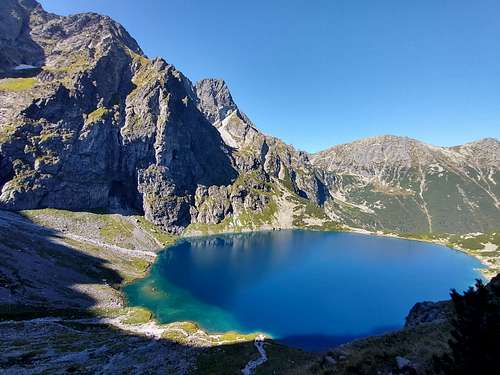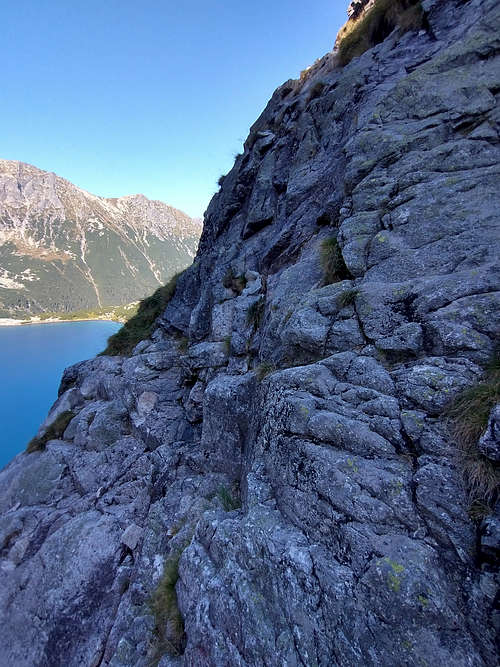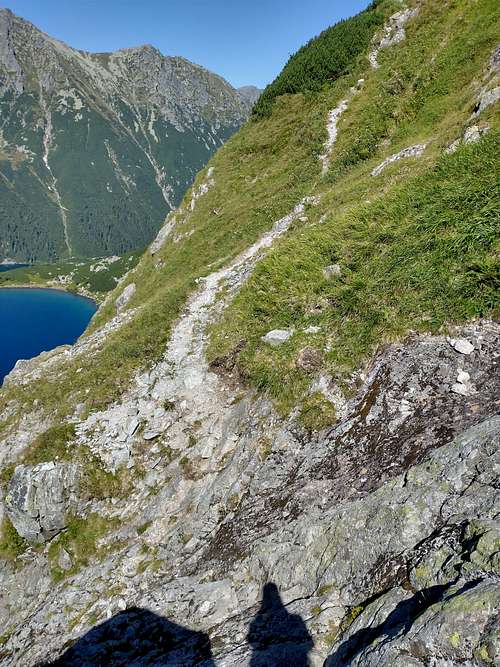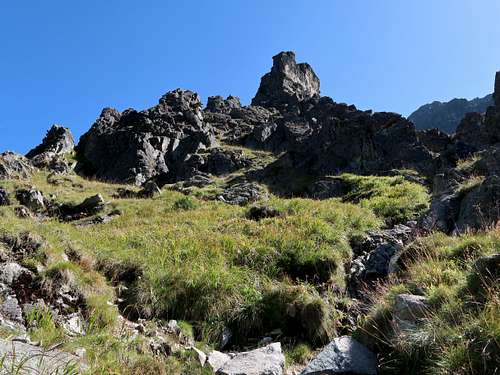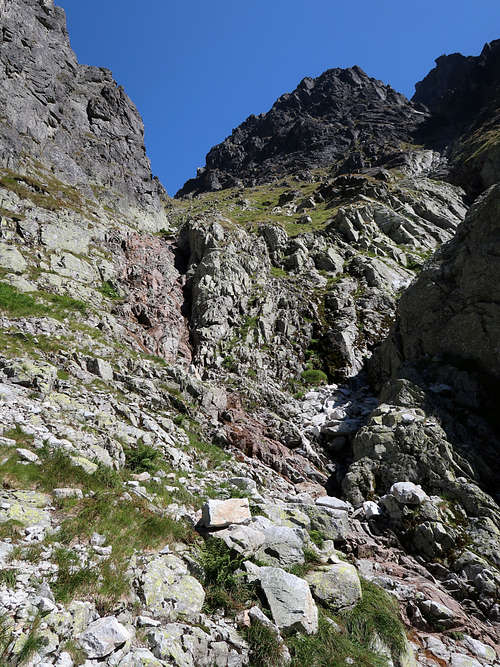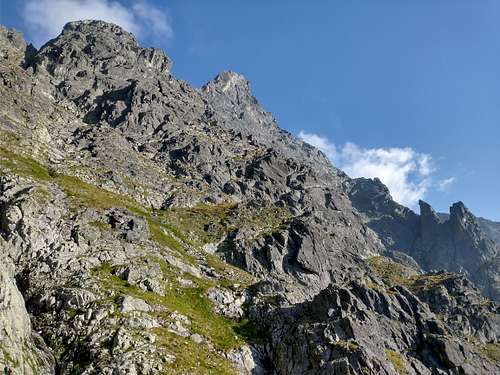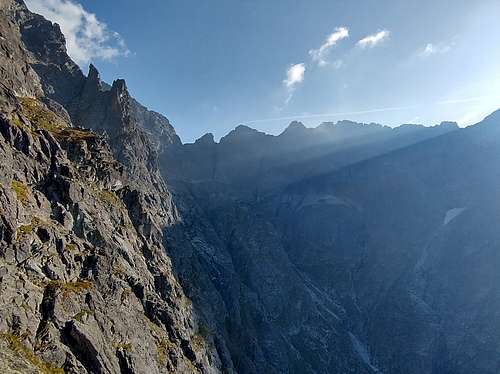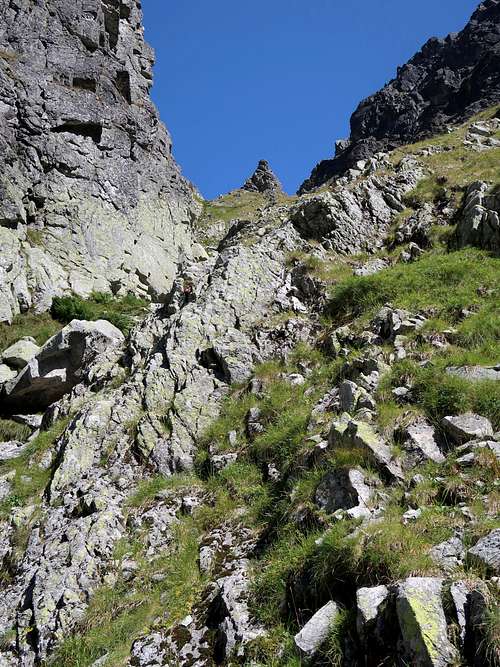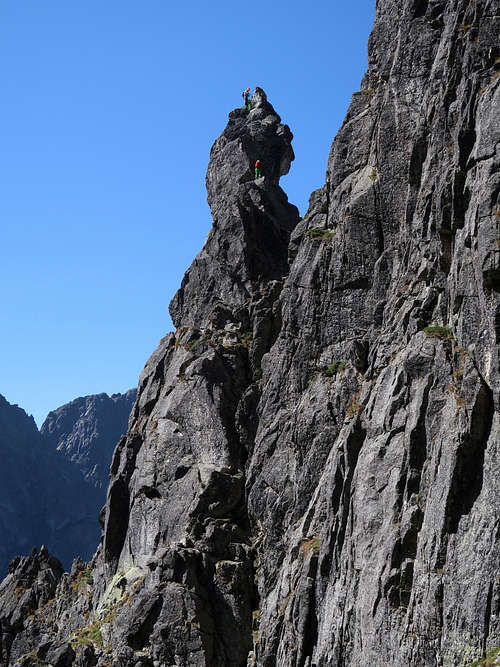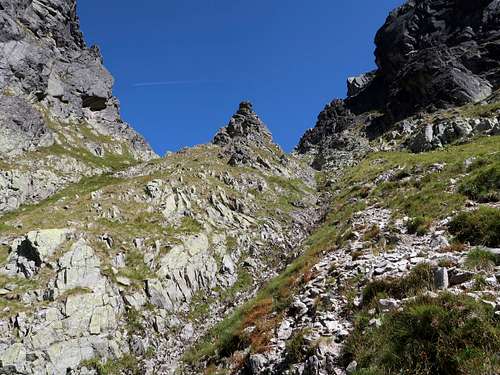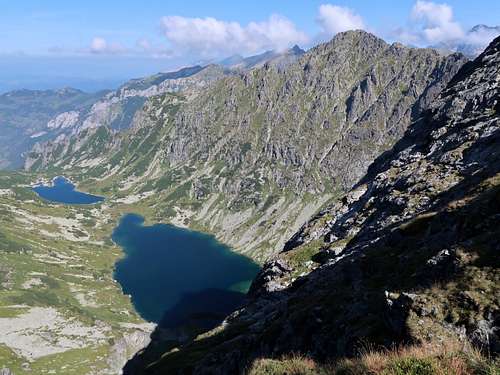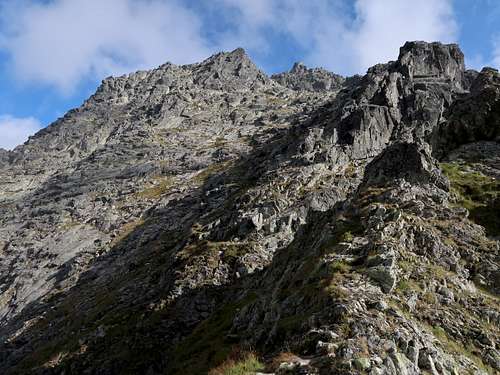|
|
Route |
|---|---|
|
|
49.18902°N / 20.08670°E |
|
|
Hiking, Scrambling |
|
|
Spring, Summer, Fall |
|
|
Half a day |
|
|
Class 4 |
|
|
Overview
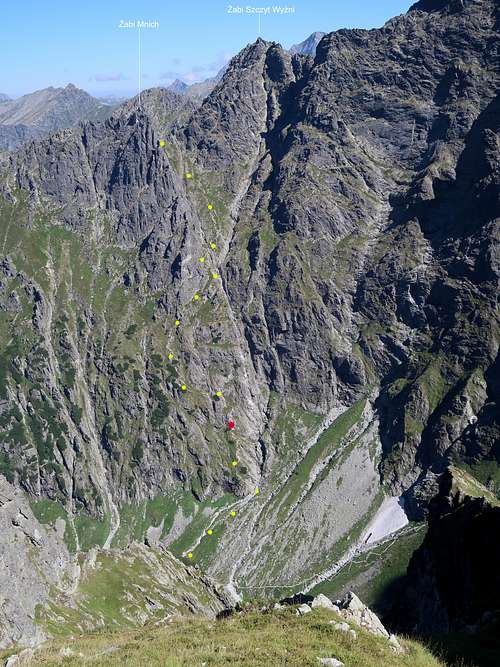
Route ProfileRock difficulty (the crux only): Polish grade I / UIAA grade I-II / YDS class 4 (please see these remarks) Approx. time of ascent: 1h 45min Net elevation gain: approx. 500m (from Morskie Oko Hut 690m; from Polana Palenica 1100m)
Total elevation gain: not much more
Approx. approach time: Łysa Polana/Lysá Poľana to Morskie Oko Hut - 2h (including Łysa Polana/Lysá Poľana to Polana Palenica car park - 15min) Morskie Oko Hut to Starting point marked in the 2nd photo - 1h |
Route Description
Maps
As for the analog maps, there are plenty of options. I would recommend the plastic 1:25,000 map of the Polish and Slovak Tatras by WiT. It is waterproof, durable, cheap, plus the route is marked on the map. |
Getting There (to Nearest Hut)
|
Poland Polana Palenica, where you will most likely be entering the national park, lies east of Zakopane, 12km away as the crow flies and nearly 25km away by road. Zakopane sits at the foot of the Tatra Mountains about 100km south of Kraków, where there's an international airport. (BTW The city of Kraków certainly boasts one of the most interesting old towns in East Central Europe.) It should take you less than two hours to drive from Kraków to Zakopane, but at the weekend or in high season, it often takes more than 3.5hrs, which is how long a journey by train lasts. As for the buses, check out this website. (The station adjoins the central railway station 'Kraków Główny'.) In Zakopane, minibuses to Polana Palenica (car park and bus/minibus terminus) leave from in front of the entrance to the railway station. Polana Palenica sits in the valley of River Białka, at about 985m. If you go by car, the only possible way to pay for parking is online. From Polana Palenica you walk up the valley along the same tarmac road (later with several shortcuts marked with red stripes) for about 1hr 45min (nearly 9km), making an ascent of 410m, until you get to the hut that sits by Morskie Oko. (About 25min before Morskie Oko is Polana Włosienica, where you can also get by horse-drawn wagon. A few hundred metres past the place is a restaurant with decent toilets next to it.) Slovakia |
Red Tape
To do the route legally you are supposed to register your climb (online or in the book kept outside the older building of the Morskie Oko Hut) stating you are going to climb Żabi Mnich. If you do, make sure you check out just after you have returned!
Essential Gear
Good hiking boots or rather approach shoes, a good route description. If you do not feel confident with YDS class 4/UIAA grade II terrain or if it is wet, a good idea is to take some rope (20m will suffice) and relevant abseiling gear.
When To Climb, Mountain Conditions & Rescue
|
The best season is summer and often early autumn, the best month seems to be September providing it isn't rainy. In high season and at weekends expect huge crowds on the approach trail.
|
External Links
This TR by Michał - Projekty Przygodowe is in Polish but has informative images of the crux area which I found helpful.
